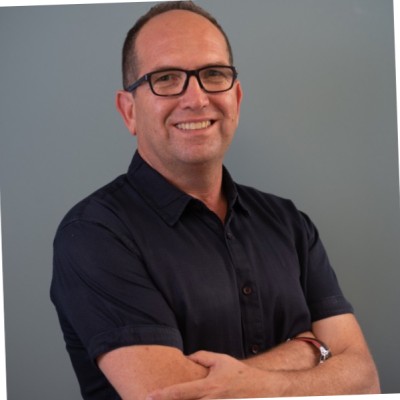- Video Library
- Amos Ziv, CardiaCare - Neuromodulation Device to Treat Atrial Fibrillation | LSI USA '24
Amos Ziv, CardiaCare - Neuromodulation Device to Treat Atrial Fibrillation | LSI USA '24

Amos Ziv
An entrepreneur, researcher and clinician in the field of cardiovascular support. With over 15 years of experience in the treatment of cardiovascular disorders in a multifactorial approach, Amos has founded and managed private as well as hospital-based clinics in this field. Based on clinical expertise he founded CardiaCare, a company focused on the development of non-invasive neuromodulation systems for the treatment of cardiac arrhythmias, heart failure, and cardiovascular prevention. Based on autonomic nervous system ECG and HRV assessments, CardiaCare technology delivers peripheral nerve stimulation to rebalance autonomic tone resulting in reduced arrhythmia and decreased sympathetic tone. Previous experience included positions such as founder and head of the Integrative Medicine Research Center of Asaf Harofeh Medical Center (hospital) where he lead and conducted clinical trials in cardiovascular prevention and acute ER pain care, Chairman of the SIRF - Sino-Israeli Research Foundation, Senior lecturer in the Michlala Leminahal College, Israel and adjuvant lecturer positions in the Hebrew University of Jerusalem School of Pharmacy.
Amos Ziv
An entrepreneur, researcher and clinician in the field of cardiovascular support. With over 15 years of experience in the treatment of cardiovascular disorders in a multifactorial approach, Amos has founded and managed private as well as hospital-based clinics in this field. Based on clinical expertise he founded CardiaCare, a company focused on the development of non-invasive neuromodulation systems for the treatment of cardiac arrhythmias, heart failure, and cardiovascular prevention. Based on autonomic nervous system ECG and HRV assessments, CardiaCare technology delivers peripheral nerve stimulation to rebalance autonomic tone resulting in reduced arrhythmia and decreased sympathetic tone. Previous experience included positions such as founder and head of the Integrative Medicine Research Center of Asaf Harofeh Medical Center (hospital) where he lead and conducted clinical trials in cardiovascular prevention and acute ER pain care, Chairman of the SIRF - Sino-Israeli Research Foundation, Senior lecturer in the Michlala Leminahal College, Israel and adjuvant lecturer positions in the Hebrew University of Jerusalem School of Pharmacy.

17011 Beach Blvd, Suite 500 Huntington Beach, CA 92647
714-847-3540© 2025 Life Science Intelligence, Inc., All Rights Reserved. | Privacy Policy







